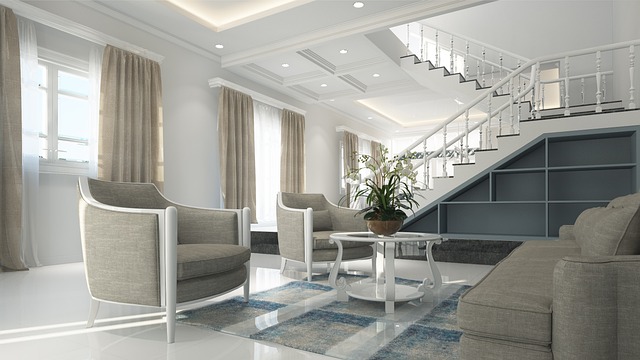If you have ever walked into your home and thought, Somehow this feels smaller than it should, you are not alone. A lot of houses and apartments have enough square footage on paper, yet something in the setup makes the rooms feel tighter than they really are. The good news is that you can fix most of that with a few simple tweaks. These changes do not require a remodel, a huge budget, or a professional designer standing behind you. They just call for a fresh look at how you use your space.
Think of this as a friendly walkthrough with someone pointing out practical things you can do. Nothing complicated. Nothing overwhelming. Just a handful of habits and upgrades that can open your home and help every room breathe a little easier.
Clear the Visual Noise
Let’s start with the simplest move. Look around and see what your eyes bump into first. Overstuffed shelves. Cluttered countertops. Random things that ended up sitting out because they had no real home. All of that creates visual noise, and that noise makes your brain read the space as smaller.
Tidy spaces almost always feel bigger than cluttered ones. It is not even about minimalism. It is about having fewer distractions in any one line of sight. Try removing decor pieces you do not love or use. Put away items that collect dust more than purpose. Think about surfaces like your kitchen island or your coffee table and aim to give them breathing room. If everything is fighting for attention, nothing stands out.
Closed storage helps in a big way. Baskets, bins, sideboards, and cabinets keep random items out of view so your home still feels warm but not busy. And when you reduce the number of bulky items crowding each room, even by a little, the whole place feels more open.
Read more:
- The Best Ways to Maximize Your Outdoor Space
- Home Upgrades That Instantly Elevate Your Living Space
- Why Professional Design Elevates Home Spaces in 2025
Rethink the Layout
You do not need new furniture to change the energy of a room. Sometimes you just need to move what you have. People tend to push everything against the walls because it seems logical, but that often flattens a room instead of opening it up.
Try pulling a sofa forward a few inches. Angle a chair instead of keeping everything perfectly squared. Create natural pathways where it feels easy to walk through the space without zigzagging around obstacles. These small changes encourage flow, and flow is what makes a room feel bigger without changing its size.
If you have heavy or bulky pieces, consider replacing just one with something slimmer or more functional. A narrow console instead of a deep dresser. A coffee table with open legs instead of a solid block. Multi-use pieces also help. A storage ottoman keeps blankets or games hidden. A foldable desk offers a workspace without eating up the whole room.
Let Light Do the Heavy Lifting
Light is one of the strongest tools you have. Natural light, especially, can change a room with almost no effort on your part. If your windows are covered with thick treatments, switch them for sheer curtains or lift them entirely when possible. The more daylight that can enter, the larger the room feels.
Artificial light matters too. Dark corners shrink a room because your eyes assume the space ends where the shadows start. Try adding a small lamp in a spot that feels dim. Consider replacing a single overhead light with two or three different sources. A mix of floor lamps, table lamps, and sconces keeps the room bright without feeling harsh.
Reflective surfaces are another simple trick. A glass or mirrored tray on a table. A glossy side table. Even a metallic lamp base helps bounce light across the room. You are not trying to make the space shiny, just lighter.
Use Color to Stretch the Room
Color changes how our brains read distance. Light neutrals like soft white, cream, pale gray, or light beige create the illusion of more space because they reflect light instead of absorbing it. Painting your walls in these shades pushes the boundaries outward.
But you do not have to stick to only pale colors. A bit of contrast helps a room avoid that washed-out feeling. Think about one darker accent piece against lighter surroundings. For example, a warm wood table in an otherwise bright dining room adds balance without weighing the room down.
Now, let’s talk flooring, because many people wonder what color floors make a room look bigger. Lighter floors usually open up a space, especially pale oak, maple, or soft neutral vinyl, because these tones keep the room brighter from the ground up. However, dark floors can also make a room look bigger when paired with light walls and ample natural light, creating a bold contrast that draws the eye upward. Continuous flooring throughout the main areas of your home also helps because it removes visual breaks. Your eyes naturally follow the uninterrupted surface, making the space feel connected and more expansive.
Bring in Mirrors and Glass
Mirrors are one of the oldest tricks for a reason. They double whatever space they face. You do not need a giant statement mirror, though those work well if you like the look. Even a medium mirror placed across from a window can make your room feel twice as open.
Glass furniture offers a similar advantage. A glass coffee table takes up physical space but not visual space. You can see right through it, which keeps the room from feeling crowded. Glass cabinet fronts can lighten the look of a heavy storage piece, especially in smaller rooms or narrow hallways.
Keep Textures and Patterns Simple
Textures and patterns add personality, but too many of them in one place can shrink a room fast. If you love textures, try using them in a more consistent way. For example, if you have a chunky knit throw on the sofa, pair it with smoother cushions rather than a dozen competing materials.
Patterns need balance as well. Large, loud prints pull attention inward, making the walls feel closer. Smaller-scale patterns or simple designs help the room stay open. You can still express your style. Just do it with intention so the space does not start to feel busy.
Lift the Room Using Vertical Space
When floor space feels limited, look up. Vertical space is one of the most underused tools in home design. Tall bookshelves, long curtains, or art that hangs higher on the wall draw the eye upward and make ceilings feel taller.
If your curtains stop right at the window frame, try hanging them a few inches below the ceiling instead. This single change can give the illusion of extra height. Floating shelves offer storage without eating into the floor. A tall plant in the corner adds life and height at the same time.
Pick Decor That Works Hard, Not Loud
You do not need dozens of decor pieces to make your home feel styled. In fact, fewer larger items usually create more visual impact than many small ones scattered around. A single oversized vase or a big piece of art is easier on the eyes than ten tiny knick-knacks.
Plants also help open a room when used well. Choose plants that keep their shape and do not spill everywhere. A snake plant, for example, adds greenery without taking over the floor.
A Home That Breathes
Opening up your home is not about changing everything. It is about noticing what feels heavy, what feels cluttered, and what steals space from the room without adding value. Start with one or two changes, maybe clearing a surface or rearranging a few pieces of furniture. Then let those small wins motivate the next steps.
Bit by bit, your home starts to feel lighter. Bigger. Easier to live in. That is the real goal.

